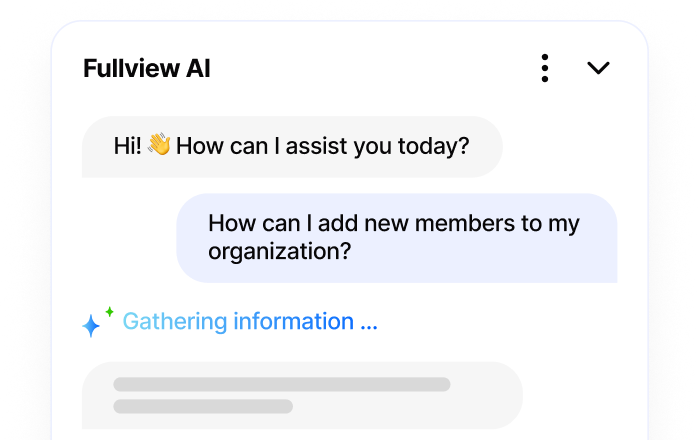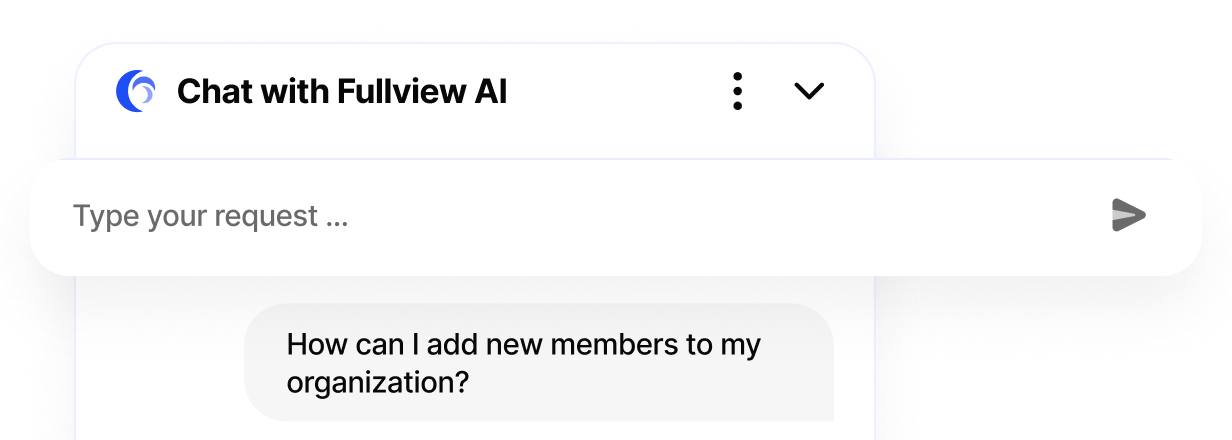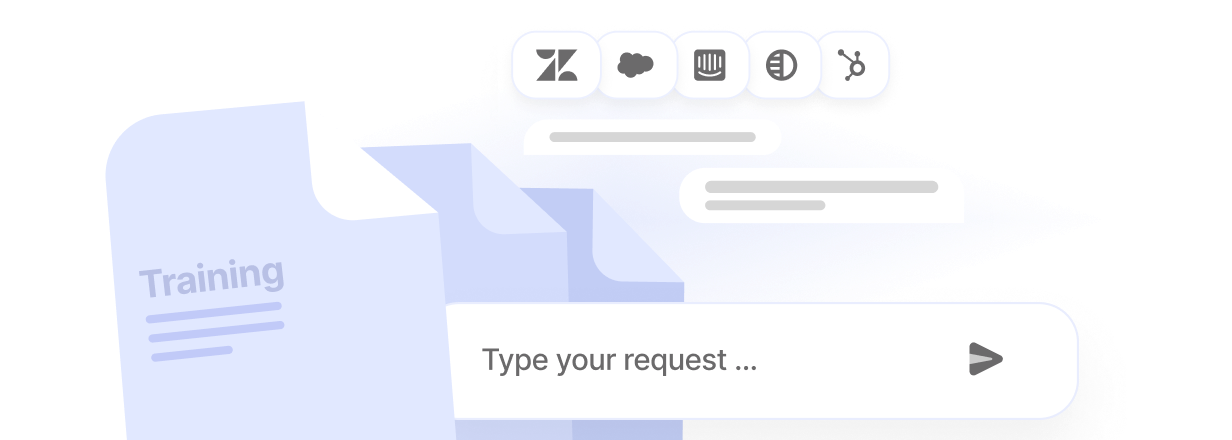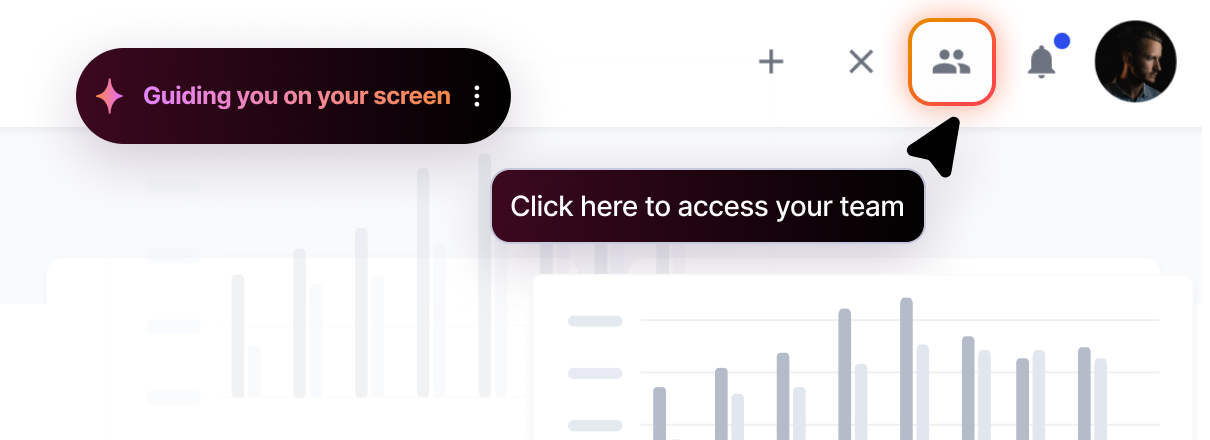86% of SaaS users abandon onboarding flows within the first week. While your competition scrambles to patch broken user journeys with more chatbots and help docs, forward-thinking companies are implementing automated user guidance systems that don't just respond to problems, they prevent them entirely.
Unlike passive chatbots that wait for users to get stuck, automated guidance actively steers users through complex workflows, highlights critical elements, and can execute actions on their behalf. This "do rather than tell" approach represents the next evolution beyond static product tours and reactive support.
This seven-step framework will show you how to implement automated user guidance that delivers measurable ROI: 50% higher activation rates, 40% reduction in support costs, and 369% ROI within the first year.
What Is Automated User Guidance?
Automated user guidance is technology that proactively steers users through UI flows, highlights critical elements, and can execute actions on their behalf via an AI agent. Unlike traditional support tools that react to user problems, automated guidance prevents friction before it occurs.
Key Components:
- Real-time context capture through session replays and user behavior tracking
- Visual overlays that guide attention to specific UI elements
- Multi-cursor control enabling collaborative assistance
- Autonomous execution where AI agents perform actions for users
How It Differs From Legacy Tools
The fundamental difference: traditional tools inform users what to do, while automated guidance shows them how to do it and can do it for them.
Why Proactive Guidance Matters for SaaS Growth
Impact on Activation and Retention
Companies implementing automated guidance achieve 50% higher activation rates compared to static onboarding approaches. The business impact is substantial: research shows that a 25% increase in activation rate leads to 34% rise in MRR over 12 months, making activation improvements more valuable than equivalent acquisition spending.
The data tells a compelling story:
- Interactive onboarding flows deliver 50% higher activation than static tutorials
- Users completing guided tours are 3x more likely to become paying customers
- Personalized guidance paths drive 35% increases in completion rates
- Companies with net retention above 100% grow 43.6% annually vs 13.1% for those below 60%
Use Case Example: A mid-market CRM implemented automated form-filling guidance that pre-populated report parameters based on user context. This eliminated the #1 drop-off point in their onboarding flow, resulting in 42% improvement in Day-7 activation and 28% reduction in first-month churn.
Support Cost and CSAT Gains
Automated guidance transforms support economics by shifting from reactive ticket resolution to proactive issue prevention. Well-executed systems achieve 40-60% ticket deflection rates, with industry leaders reaching 60%+ deflection.
Before vs After Implementation:
Customer Success Story: "After implementing Fullview's automated guidance, we reduced our first-month support tickets by 65% while achieving our highest-ever CSAT scores. Users get visual help exactly when they need it, and our agents can focus on complex issues that drive real value." Head of Customer Success, Series B SaaS Company
Seven-Step Implementation Framework
Step 1: Identify High-Friction User Flows
Start by analyzing your product analytics to spot drop-off points, rage clicks, and user frustration signals. Companies using session replays to identify friction points see 32% faster issue resolution compared to those relying on user reports alone.
Tools and Approach:
- Fullview Session Replays for pixel-perfect user behavior capture
- Heatmap analysis to identify rage clicks and confusion points
- Funnel reports to quantify drop-off at each onboarding stage
Expected Output: A ranked list of your top 3 friction flows with quantified impact. For example: "Account setup flow has 47% drop-off rate, representing $234K in lost ARR annually."
Step 2: Capture Real-Time Context With Session Replays
Implement comprehensive session capture to fuel precise, contextual guidance. Session replay = pixel-perfect recording of user interactions plus console logs and network errors that provide the context needed for intelligent automation.
Critical Data Points to Collect:
- Click paths and navigation patterns to understand user intent
- JavaScript errors and network failures that cause silent failures
- User metadata (role, subscription tier, feature access) for personalization
- Form abandonment points and field-level interaction data
Business Impact: LogRocket customer 7-Eleven achieved sub-1% issue rates and 32% increase in conversions by using session data to identify and resolve friction points proactively.
Step 3: Set Guidance Goals and KPIs
Align your technical rollout with measurable business outcomes using SMART KPIs that directly tie to revenue and cost reduction.
Recommended KPI Framework:
- Primary: 20% faster time-to-first-value (measured in days)
- Secondary: 30-point CSAT improvement within 90 days
- Efficiency: 40% ticket deflection rate for guided flows
- Revenue: 25% improvement in activation rate within 6 months
Dashboard Recommendation: Build a "Guidance Impact" dashboard tracking weekly cohort activation rates, support ticket volume by flow, and user progression through key workflows.
Step 4: Select the Right Automation Layer
Choose between point solutions and comprehensive AI agent platforms based on your automation requirements and maintenance capacity.
Decision Matrix:
Selection Criteria:
- Actionability: Can the system perform actions or only provide instructions?
- Maintenance Overhead: Who will update flows when your product changes?
- Compliance Posture: Does it meet SOC 2, GDPR, and industry requirements?
Step 5: Design Contextual Guidance Patterns
Create UI patterns that feel native to your product and respect user autonomy. Interactive guidance increases feature adoption by 42% when implemented with user control in mind.
Proven Guidance Patterns:
- Inline tooltips for contextual feature explanation
- Spotlight highlights that dim surrounding UI to focus attention
- Progressive disclosure that reveals complexity gradually
- Auto-fill actions with clear "undo" options for user control
Best Practice: Always provide opt-out mechanisms. Users should be able to dismiss guidance, skip steps, or return to manual control. Companies offering guidance with opt-out see 22% higher completion rates than forced flows.
Step 6: Test, Measure and Iterate With Real Users
Deploy to a controlled cohort and measure impact before full rollout. Companies using A/B testing for onboarding improvements see 35% better outcomes than those deploying universally.
Testing Framework:
- Beta Cohort: 5-10% of target user segment
- Control Group: Comparable users without guidance
- Measurement Period: Minimum 30 days for activation impact
- Success Metrics: Activation rate, time-to-value, support ticket volume
Measurement Tools: Use Fullview replays to look for micro-conversions within guided flows, comparing completion rates and downstream activation between test and control groups.
Step 7: Scale, Govern and Monitor Performance
Operationalize guidance across your entire product with proper governance frameworks to ensure consistency and performance.
Governance Playbook:
- Versioning: Maintain guidance flow versions aligned with product releases
- Rollout Flags: Feature flags for gradual deployment and instant rollback
- Performance Monitoring: Track guidance system performance and user feedback
- Content Management: Centralized workflow for updating guidance content
Scaling Strategy: Start with your highest-impact flow (usually onboarding), achieve measurable ROI, then expand to secondary flows like feature adoption and upgrade prompts.
Governance, Privacy and Compliance Essentials
Data Masking and Role-Based Access Controls
Protect sensitive information with technical safeguards that maintain guidance effectiveness while ensuring compliance.
Data Masking Definition: Obfuscating sensitive fields (PCI, PHI, PII) before storage or replay, ensuring session data remains useful for guidance without exposing protected information.
Best Practice Checklist:
- Field-level redaction for forms containing sensitive data
- SOC 2-aligned RBAC with principle of least privilege
- Audit logs for all data access and guidance configuration changes
- Automated PII detection with real-time masking capabilities
Meeting GDPR, SOC 2 and HIPAA Requirements
GDPR Compliance:
- User consent banners with granular opt-in for guidance features
- Right to be forgotten workflows that purge session data on request
- Data processing agreements clearly defining guidance data usage
SOC 2 Requirements:
- Continuous monitoring of guidance system access and modifications
- Penetration testing covering guidance infrastructure and data flows
- Change management processes for guidance configuration updates
HIPAA Considerations:
- Business Associate Agreements (BAA) with clear PHI handling protocols
- PHI encryption at rest and in transit for session replay data
- Role-based access ensuring only authorized personnel access health data
Metrics, Dashboards and Continuous Improvement
Key Success Metrics to Track
North-Star Metric: Time to first value (measured in days from signup to meaningful product use)
Supporting Metrics:
- Activation Rate: Percentage of users completing core onboarding within 7 days
- Ticket Deflection: Reduction in support volume for guided flows
- Net Promoter Score (NPS): User satisfaction with guided experience
- Feature Adoption Lift: Increased usage of features with guidance vs without
Revenue Impact Metrics:
- MRR Growth: Monthly recurring revenue increase from improved activation
- Customer Lifetime Value: Extended retention from better onboarding
- Support Cost per User: Reduced cost of customer success and support
Using Session Replays to Uncover New Guidance Opportunities
Continuous Discovery Process:
- Filter sessions for rage clicks, console errors, or extended time on page
- Tag problematic sessions with specific issue categories
- Analyze patterns across multiple users experiencing similar issues
- Feed findings into guidance development backlog
- Measure impact of new guidance on session quality metrics
Outcome: An iterative roadmap of guidance improvements based on actual user behavior rather than assumptions, leading to 32% faster issue resolution and 64% improvement in user experience metrics.
Frequently Asked Questions
How Is Automated User Guidance Different From Chatbots?
Automated guidance combines visual cues and direct in-app actions, while chatbots rely on text responses that leave execution to the user. AI agents achieve 60-80% resolution rates compared to 30% for traditional chatbots because they can both show and do, not just tell.
Can I Deploy Guidance Without Changing My Tech Stack?
Yes, Fullview's SDK overlays guidance on top of existing UI elements, requiring only a lightweight JavaScript snippet. The system captures user context through session replay and delivers guidance through visual overlays, integrating with existing helpdesks like Intercom, Zendesk, and Salesforce without architectural changes.
How Do I Avoid Users Feeling Loss of Control?
Provide opt-in triggers, visible highlights, and easy "undo" functionality so users can accept, modify, or cancel any automated action. Companies implementing guidance with clear user control see 22% higher completion rates than forced guidance flows.
What Are the Typical ROI Benchmarks?
Teams implementing automated user guidance typically see:
- 25-40% ticket deflection within the first quarter
- 20-point CSAT increase within three months of deployment
- 50% higher activation rates compared to static onboarding
- 369% ROI with less than 12-month payback period
How Do Autonomous Agents Handle Sensitive Data?
Fullview AI automatically masks protected fields. Field-level redaction ensures session replays remain useful for guidance while protecting sensitive information like payment details and health records.
Ready to implement automated user guidance? Book a demo to see how Fullview's AI agent can transform your user experience and support economics.








.webp)
